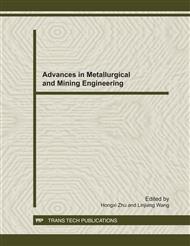p.463
p.467
p.472
p.476
p.480
p.484
p.489
p.496
p.503
Improving Repeatability in Different Oxygen Probes at Low Oxygen Potentials in Molten Steel
Abstract:
A high quality sensor used for measuring oxygen at low oxygen concentrations is required. But the Pθ of electrolyte made by different manufacturer is different from each other. We discussed the error sources and the limitation of sensing theory of electrolyte at low oxygen potentials. The Nernst function was extended through mathematical analyses, which provided a theoretical understanding to eliminate the differences among each sensor. If those extended functions were compiled into the instrument control system, the repeatability of sensors made by different manufacturers would be improved, and it only needs to replace the oxygen sensor than replacing the entire detection system after ones measurement.
Info:
Periodical:
Pages:
480-483
Citation:
Online since:
November 2011
Authors:
Keywords:
Price:
Сopyright:
© 2012 Trans Tech Publications Ltd. All Rights Reserved
Share:
Citation:


